
It’s true that there is no “I” in a team. However, there come so many occasions when the team’s success in a match relies on a particular player or two. In 43 years of the ICC Cricket World Cup history, there have been so many players who have produced such marvellous performances that they deserve to be called “World Cup Heroes.”
Many such heroes are still fondly remembered by cricket fans. However, there are some players whose World Cup performances haven’t stood the test of time and they are not appreciated as much as they should be. Here are 10 unsung World Cup Heroes.
#10 James Faulkner
When Australia’s 2015 World Cup win is remembered, the names that generally come to our minds are Mitchell Starc, Steve Smith, David Warner, etc. However, one name that deserves to be amongst the biggest contributors to Australia’s win is James Faulkner.
Faulkner did not play Australia’s first three matches of the tournament against England, Bangladesh and New Zealand. He made his World Cup debut against Afghanistan where he had a rather forgettable outing, scoring just 7 with the bat and going wicket-less in his four overs.
In Australia’s next match against Sri Lanka, Faulkner took three wickets with the ball and this performance cemented his place in Australia’s playing XI. The all-rounder, however, saved his best for the knockout stages.
In the quarter-final, Faulkner bowled an economical spell of 1/31 in 7.5 overs. In the semi-final against India, Faulkner smashed 21 of just 12 deliveries with the bat and took three wickets with the ball which made up for his economy rate of 6.55.
The then 24-year old produced his best bowling performance of the competition in the final against New Zealand. After losing three early wickets, New Zealand were looking in a good position thanks to the 111-run partnership between Ross Taylor and Grant Elliot. Then Faulkner came in and broke the partnership by dismissing Taylor. This triggered a collapse of the Kiwi batting. He later dismissed Corey Anderson before bagging the much-needed wicket of Grant Elliott. New Zealand were dismissed for 184 and Australia comfortably chased down the target with 16.5 overs to spare.
Faulkner finished with figures of 3/36 and was adjudged the Man of the Match. He was Australia’s 3rd highest wicket-taker of the competition with 10 wickets at an economy rate of 4.70.
#9 Balwinder Singh Sandhu
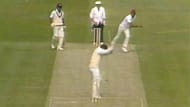
When India’s bowling attack during the 1983 World Cup is discussed, the names that are generally talked a
bout are Madan Lal, Roger Binny and Mohinder Amarnath. However, there is another bowler who made some crucial contributions during the tournament but his name hasn’t stood the test of time. He is Balwinder Singh Sandhu.
Sandhu began his tournament by taking the wicket of Gordon Greenidge in India’s tournament opener against West Indies at Manchester. He took another wicket against Zimbabwe before going wicket-less against Australia.
In the second-half of group games, Sandhu took a wicket each against West Indies and Zimbabwe before taking two wickets against Australia. The 26-year old went wicket-less in the semi-final against England.
However, Balwinder Singh Sandhu’s most memorable moment in the 1983 World Cup came in the final. India had to defend a paltry 183 and opening the Windies batting was the formidable duo of Gordon Greenidge and Desmond Haynes.
In Gordon Greenidge’s 12th delivery, Sandhu bowled a delivery which was pitching outside the off-stump. Greenidge tried to defend the delivery by letting it go but the ball curled in and shattered his stumps. This was the start that India desperately needed. Sandhu went on to take another wicket, that of Faoud Bacchus’.
Balwinder Singh Sandhu ended the 1983 World Cup with 8 wickets which is half of his ODI tally.
#8 Sandeep Patil
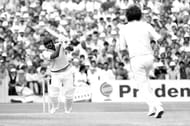
One of the biggest reasons why India clinched the 1983 World Cup was the performance of their middle-order batting spearheaded by Sandeep Patil and another player who we’ll see in the upcoming slides.
Patil began his tournament by scoring 36 against West Indies followed by a brisk 50 of 54 deliveries against Zimbabwe. He did not have a very good showing in the following three matches, scoring a combined 21 runs against Australia, West Indies and Zimbabwe. Patil ended his group stage by scoring a 25-ball 30 against Australia.
The right-hander’s best batting performance of the tournament came in the semi-final against England at Old Trafford where he scored 51 of just 32 deliveries which steered India to the final. In the final at Lord’s Patil scored 27 from 29 deliveries. Sandeep Patil ended the 1983 World Cup with 216 runs- 4th highest for India and 16th overall. He also took two catches during the tournament.
#7 Yashpal Sharma
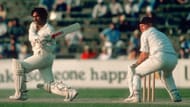
Yashpal Sharma’s contributions in the middle-order during the 1983 World Cup was more than commendable. Sharma’s 89 against West Indies in India’s tournament opener at Manchester helped India to an unexpected win.
His performance in the next four group games was forgettable as he managed to score a combined 39 runs. However, Sharma ended his group stage on a high by scoring a run-a-ball 40 against Australia at Chelmsford.
In the semi-final against England at Old Trafford, Sharma scored a composed 61 from 115 deliveries and added 63 for the 4th wicket alongside Sandeep Patil who was doing the hitting. He scored only 11 in the final against West Indies at Lord’s. Nevertheless, Yashpal Sharma ended the 1983 World Cup as India’s second-highest run-scorer with 240 runs.
#6 Andrew Symonds
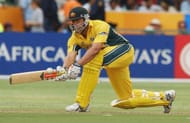
Andrew Symonds’ performances with the bat was a key reason behind Australia’s success in the 2003 World Cup. He began the tournament by smashing a career-best 143 against Pakistan at Johannesburg.
In the following match against India, Symonds took two catches. In the next two matches against Netherlands and Zimbabwe, the 27-year old went wicket-less and did not come out to bat. Against Namibia at Potchefstroom, the all-rounder scored 59 before ending his group stage with a duck against England at Port Elizabeth.
Symo did not play the first two Super Six games against Sri Lanka and New Zealand but played the final Super Six game against Kenya, scoring 33.
In the semi-final against Sri Lanka at Port Elizabeth, Australia were struggling at 51/3. However, the right-hander scored a rather composed innings of 91 from 118 deliveries to take the Aussies to 212/7. Australia won the match by 48 runs and Symonds earned his second Man of the Match award of the tournament.
In the final against India at Johannesburg, Symonds took two wickets, those of Dinesh Mongia and Harbhajan Singh as Australia clinched their 3rd Cricket World Cup title.
Andrew Symonds ended the tournament as the 9th highest run-scorer with 326 runs at an astronomical average of 163.
#5 Colin Croft
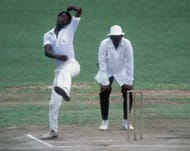
Colin Croft was one of West Indies’ star performers during the 1979 World Cup. He took only two wickets in the group stages but saved his best for the knockout stages. In the semi-final against Pakistan, West Indies had to defend a total of 293 which was pretty much possible back then. They also got an early wicket in the form of Sadiq Mohammed thanks to Michael Holding.
However, Majid Khan and Zaheer Abbas were batting brilliantly and added 166 for the second wicket. At 176/1, Pakistan were looking on course to face England in the final. However, Croft broke the partnership by dismissing Zaheer Abbas for 93 before getting rid of Majid Khan for 81.
The two dismissals triggered a downfall in the Pakistan batting and they were dismissed for 250, falling 43 runs short. Croft ended with figures of 3/29, his third scalp being Javed Miandad.
In the final against England at Lord’s, Croft took another three wickets. Joel Garner took a five-wicket haul but two of Croft’s three scalps were big ones. They were Derek Randall and Ian Botham. His third scalp was that of Mike Hendrick which confirmed West Indies’ second consecutive World Cup win.
#4 Andy Bichel
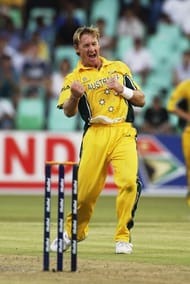
Another Aussie player who hasn’t been given enough credit for Australia’s 2003 World Cup win is Andy Bichel. Brett Lee and Glenn McGrath were tremendous throughout the tournament but Bichel’s contribution to Australia’s win was more than substantial. He contributed immensely with the ball and a few times with the bat as well.
Bichel made his tournament debut in Australia’s third match of the tournament against the Netherlands and bowled a brilliant spell of 3/13. Jason Gillespie’s injury cemented Bichel’s place in the playing XI. He then played against Namibia and took two wickets in an over without conceding a single run.
The 32-year old then produced his finest performance of the tournament against England, bowling a career-best spell of 7/20. In that very match, he scored 34 with the bat and added 73 runs for the 9th wicket with Michael Bevan to win the match for Australia. He was eventually adjudged the Man of the Match.
In the Super Sixes, Bic scored a career-best 64 against New Zealand at Port Elizabeth to help Australia to 208/9 from 84/7. He ended the Super Sixes with a spell of 2/42 against Kenya at Durban.
Bichel bowled an extremely economical spell of 0/18 in the semi-final against Sri Lanka at Port Elizabeth. The pacer conceded 57 runs in the final against India at Johannesburg but took the crucial wicket of Rahul Dravid.
Andy Bichel ended the tournament as the joint 7th highest wicket-taker with 16 wickets at an impressive average of 12.31 which was the best average among all the bowlers who took 10 or more wickets.
#3 Bernard Julien
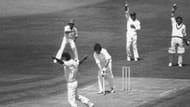
Pacer Bernard Julien was one of West Indies’ premier contributors with the ball during the 1975 World Cup. He began the tournament with a brilliant spell of 4/20 against Sri Lanka at Old Trafford which eventually earned him the Man of the Match award. Julien then took a wicket each in the other group games against Pakistan and Australia.
Julien produced his best bowling of the tournament in the semi-final against New Zealand at The Oval. He bowled a brilliant spell of 4/27 to reduce New Zealand to 158 all out. In the final against Australia at Lord’s, Julien scored an unbeaten 26 with the bat but went wicketless with the ball as West Indies won the match by 17 runs to clinch the inaugural Cricket World Cup.
Bernard Julien eventually ended the tournament with 10 wickets, the second highest wicket-taker of the tournament.
#2 Mike Veletta
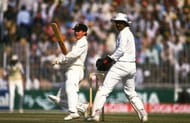
Mike Veletta is a name that most cricket fans have never heard of but the player was a key entity during Australia’s maiden World Cup win in 1987. Veletta played only four matches but his contributions in three of them have been immense.
Aged 24 at the time, Veletta played his first match of the competition against New Zealand, scoring just 1. In Australia’s final group game against Zimbabwe, Veletta scored 43 of just 39 deliveries. In the semi-final against Pakistan at Lahore, he scored a 50-ball 48 to help Australia reach 267/6.
However, Veletta’s most important innings of the tournament came during the all-important final against England at Eden Gardens. Coming in at No.6, he smashed 45 off just 31 deliveries to help Australia to 253/5. England eventually fell 7 runs short and Australia won the tournament. Given the margin of victory, Veletta’s 45 was extremely vital.
#1 Collis King
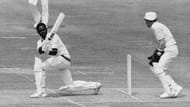
Collis King began the 1979 World Cup by taking a wicket in the tournament opener against India at Edgbaston. He then took a wicket and scored 12 with the bat against New Zealand at Trent Bridge. In the semi-final against Pakistan at The Oval, King scored a 25-ball 34 but went wicket-less with the ball.
However, King’s finest performance of the tournament came in the final against England at Lord’s. In the final, the Windies were struggling at 99/4 when King came in to join Viv Richards at the crease. While Richards was playing in a rather balanced manner, King was smashing the English bowlers all around the park. He added 139 for the 5th wicket with Richards to put West Indies in a strong position.
He scored 86 from 66 deliveries before being dismissed by Phil Edmonds. West Indies eventually posted 286/9 on the board. England were looking dangerous at 129/0 before King took a catch to dismiss skipper Mike Brearley. This triggered a downfall in the England batting and England were dismissed for 194. West Indies thus retained their World Cup title.
Viv Richards scored a magnificent 138 but Collis King’s 86 was equally magnificent and most importantly, it elevated Windies’ scoring rate. His solitary catch during the total defence was also priceless. Despite contributing so much to West Indies’ World Cup win, Collis King has always been a highly underappreciated cricketer.
Looking for fast live cricket scores? Download CricRocket and get fast score updates, top-notch commentary in-depth match stats & much more! 🚀☄️
